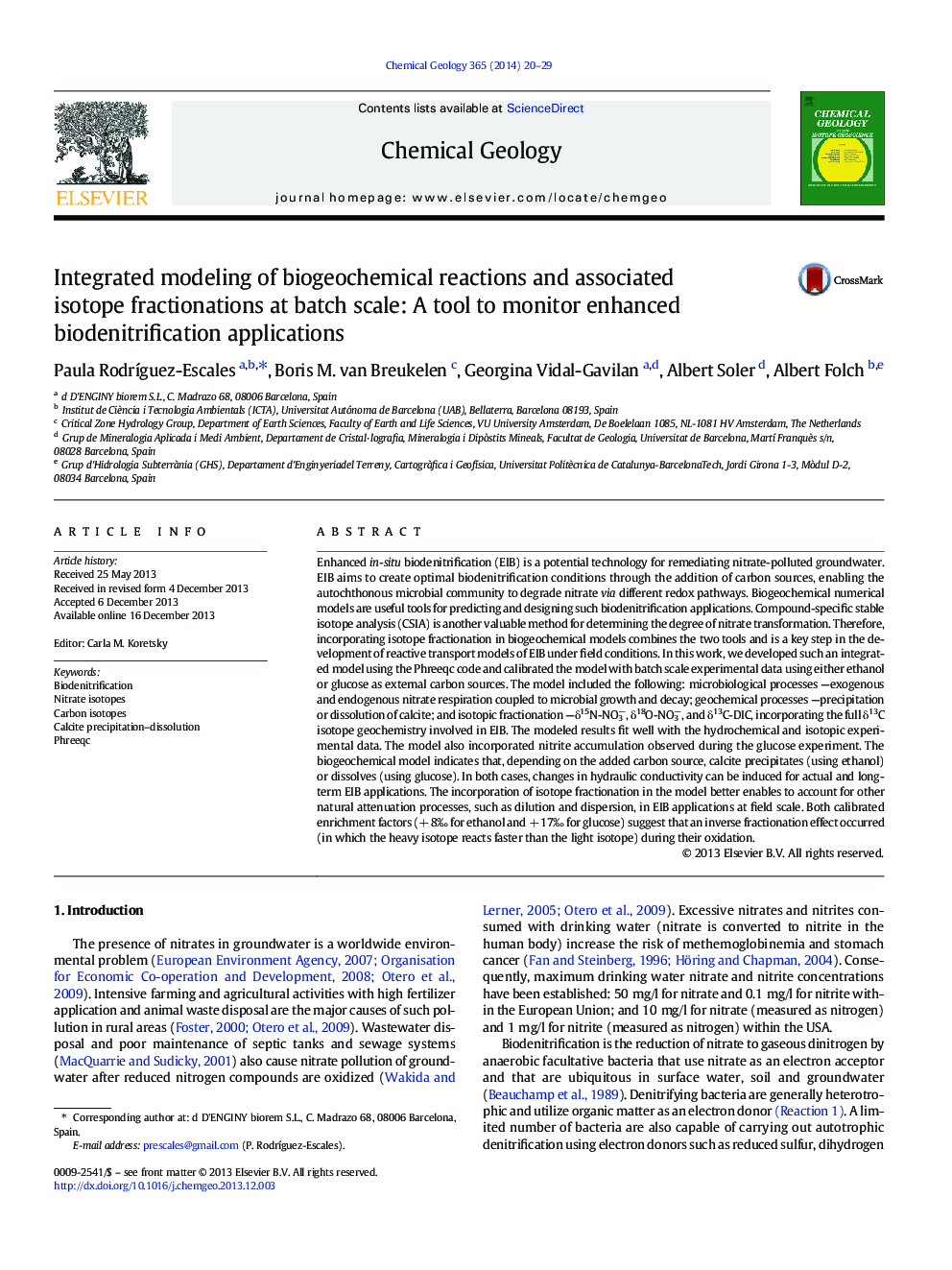| کد مقاله | کد نشریه | سال انتشار | مقاله انگلیسی | نسخه تمام متن |
|---|---|---|---|---|
| 6436731 | 1637605 | 2014 | 10 صفحه PDF | دانلود رایگان |
- An integrated model of EIB is presented considering biogeochemistry and isotopes.
- Adding isotopes allows for the improved quantification of EIB processes.
- The organic carbon source can induce calcite precipitation or dissolution.
- Enrichment factors indicate the inverse fractionation of carbon sources.
- It is the first step in developing an integrated EIB model at the field scale.
Enhanced in-situ biodenitrification (EIB) is a potential technology for remediating nitrate-polluted groundwater. EIB aims to create optimal biodenitrification conditions through the addition of carbon sources, enabling the autochthonous microbial community to degrade nitrate via different redox pathways. Biogeochemical numerical models are useful tools for predicting and designing such biodenitrification applications. Compound-specific stable isotope analysis (CSIA) is another valuable method for determining the degree of nitrate transformation. Therefore, incorporating isotope fractionation in biogeochemical models combines the two tools and is a key step in the development of reactive transport models of EIB under field conditions. In this work, we developed such an integrated model using the Phreeqc code and calibrated the model with batch scale experimental data using either ethanol or glucose as external carbon sources. The model included the following: microbiological processes -exogenous and endogenous nitrate respiration coupled to microbial growth and decay; geochemical processes -precipitation or dissolution of calcite; and isotopic fractionation -δ15N-NO3â, δ18O-NO3â, and δ13C-DIC, incorporating the full δ13C isotope geochemistry involved in EIB. The modeled results fit well with the hydrochemical and isotopic experimental data. The model also incorporated nitrite accumulation observed during the glucose experiment. The biogeochemical model indicates that, depending on the added carbon source, calcite precipitates (using ethanol) or dissolves (using glucose). In both cases, changes in hydraulic conductivity can be induced for actual and long-term EIB applications. The incorporation of isotope fractionation in the model better enables to account for other natural attenuation processes, such as dilution and dispersion, in EIB applications at field scale. Both calibrated enrichment factors (+ 8â° for ethanol and + 17â° for glucose) suggest that an inverse fractionation effect occurred (in which the heavy isotope reacts faster than the light isotope) during their oxidation.
Journal: Chemical Geology - Volume 365, 4 February 2014, Pages 20-29
